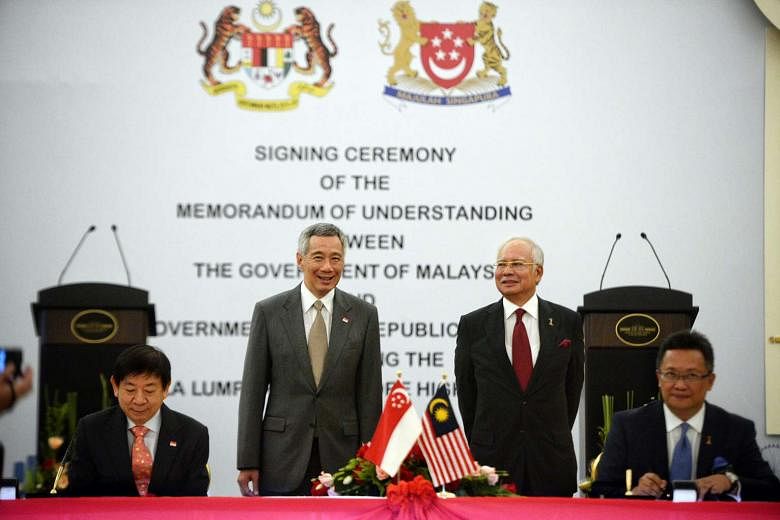In its editorial on July 20, the paper encourages policy makers to come up with suitable pricing that will allow the High-Speed Rail to be a game-changer in relations between Malaysia and Singapore.
The High-Speed Rail (HSR) between Kuala Lumpur and Singapore is a go.
Ten years from now, people will be able to shuttle between those two stops within 90 minutes, opening a new avenue of travel that will undoubtedly bring about vast economic benefits for both countries.
There will be other stops between the terminals in Bandar Malaysia in Kuala Lumpur and Jurong East in Singapore, with passengers able to board the high-speed train at Putrajaya, Seremban, Ayer Keroh (Malacca), Muar, Batu Pahat and Iskandar Puteri (Johor).
The key feature of the HSR will be its three-pronged service.
There is the express link between Bandar Malaysia and Jurong East, a transit service for the stops in Malaysia, and a shuttle service between Iskandar Puteri and Jurong East.
Apart from the stops, the key differentiator will be the price of the tickets for these services.
Fares for the express service will be based on dynamic pricing, meaning just like the airlines currently, fares will be most expensive during peak periods. The transit and shuttle services will have lower fares.
A lot is riding on this project, and it is not merely a matter of offering a quicker alternative to flying between Malaysia and Singapore.
An equally important factor will be how much it will cost to take the HSR.
An HSR ticket is expected to be cheaper than a plane ticket.
And just as it is with an airline ticket, people should be able to save money by booking weeks or months ahead of the travel date.
Getting the numbers right will be the main challenge.
It has been projected that 20 million people will eventually use the HSR services a year.
In comparison, 6,000 people reportedly flew daily from Singapore to Kuala Lumpur in 2014, and 1.2 million Malaysians visited Singapore through modes other than land.
It was also reported that 400,000 Malaysians went through the Causeway and the Second Link daily.
If the HSR is to be successful, the cost of travel needs to be competitive when compared with the costs of other land-based transportation modes.
It cannot just be a replacement for air travel because that may mean it will be a long time before it reaches an annual ridership of 20 million.
Such a scenario will put immense pressure on the operators of the HSR, who have relatively short concession periods. In addition, the owners of the infrastructure and the rolling stock want their assets to be fully utilised as soon as possible.
It is tough to get the right balance, but it is essential if the HSR is to fulfil its role as a game changer in travel between Malaysia and Singapore and along the key stops in the peninsula.
* The Star is a member of The Straits Times media partner Asia News Network, an alliance of 21 newspapers.

